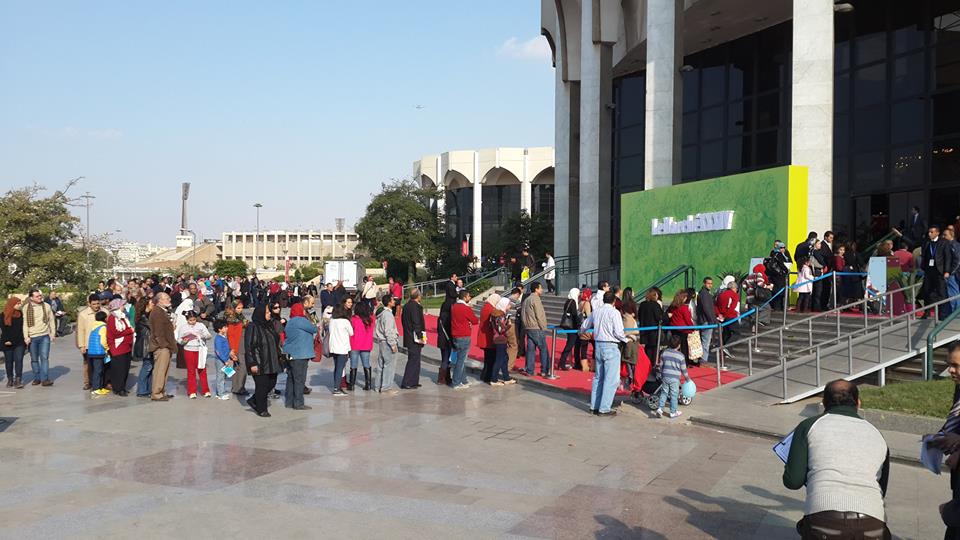Although the idea of integrating traditional culture references with modern art is not a new concept, the +20 Egypt Design exhibit manages to take it to the next level.
In creating the first-ever Egyptian furniture design week, the event’s organizers managed to fill five different venues around the historical area of el-Moaz street in Cairo with unique and brilliant designs, the results of brainstorming sessions among young Egyptian designers and famous Italian designers.
+20 Egypt Design is the Egyptian equivalent of Zona Tortona, an area in Milan dedicated entirely to new designers and their latest inventions and creations. Furnex, the seventh furniture expo in Egypt, is taking place around the same time.
“I could not feel more happy visiting the fair this year,” says Adriana Jones, an American designer. “Walking the old and historic streets of Cairo helped me rethink some of my designs and recreate others.”
The Egyptian Furniture Export Council (EFEC) came up with the idea of putting together a creative zone almost three years ago.
“The council worked with many furniture factories,” says Omnia el-Maghrabi, executive director of EFEC. “We wanted to focus on our original designs, for them to be competitive when exported outside of Egypt… We wanted to leave a mark on all the markets we export to, that tells of our heritage and cultural influence.”
The first wave of new designs were put on display in the Salon Internazionale Del Mobile in 2009, and gained global recognition. “Minster [of Trade and Industry] Rachid Mohamed Rachid visited Milan and saw the products and was very impressed by them,” el-Maghrabi says. “He joined forces with Ahmed Helmy [chairman of the council] to start something similar in Egypt. We started planning for it in April 2009.”
With the help of Farouk Hosni, Egypt’s minister of culture, the event was launched in venues in the historic areas of el-Moaz Street, Beit el-Seheimi (the el-Seheimi House), Khorazati and Mostapha Gafar. The el-Seheimi House was filled with the largest variety of pieces. Its 26 rooms were furnished with different sets picked by Italian designer Paula Navone, who chose items that wed modern and traditional aspects of Egyptian styles together. Novone made use of oriental styling in every sense, including an ornate trail of shisha pipes throughout the house guiding guests through her exhibition.
Walking between the different houses hosting the show, blue flags are visible advertising various events, and el-Moaz Street is filled with student painters and artists invited by the minister of culture to sit and draw passers-by. The whole space has a trendy, creative atmosphere. And, in usual form, there are a couple of Egyptian Tanoura shows taking place on the doorsteps of each house.
Planning for the event was not an easy task, as it required communication between Egyptian organizers and the Italian team Design Partners, who staged Zona Tortana. “We organized and pushed to have this event,” says Sherif Abdul Hadi, cice-president of the EFEC “We needed to adjust the Italian way of thinking to the Egyptian culture and make sure they would not contradict one another.”
The council organized students from the Faculty of Fine Arts in Cairo, the American University in Cairo, the German University, and different Italian designers in creative teams, to produce products influenced both by Egyptian culture and modern western design.
The collection of final products is captivating. Furniture of all different shapes and sizes is tastefully organized around the different venues with well-placed lighting and tailored settings. Bedsheets embroidered with Um-Kalthoum’s song “Enta Omry” are used to cover chic and modern wooden beds, while more traditional deep blue sheets dress a bed with two chandeliers lighting the room from the floor, rather than being hung from the ceiling. Distinctive lighting is also used to accentuate wooden, plastic and metal chairs gathered in living-room sets.
The “piece de resistance”–a shisha table, created by Dina Shukry–stands front and center, adorned with juice coins and supported with shisha pipes.
“I believe I’m extremely passionate about tables,” says Shukry, who didn’t study design but found it to be her passion. “I think that everything revolves around this central piece. I was not one of the people who joined these workshops and I didn’t work with any of the factories. I just enjoy creating things with my hands.”
“Paula picked my design to stand among this mixing of culture,” she adds. “It’s an honor.”



